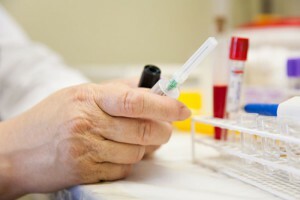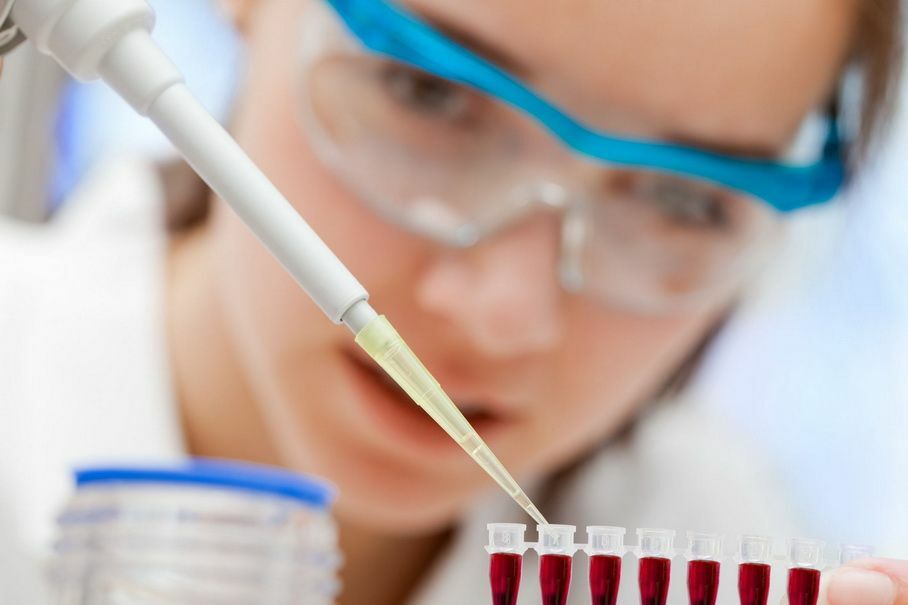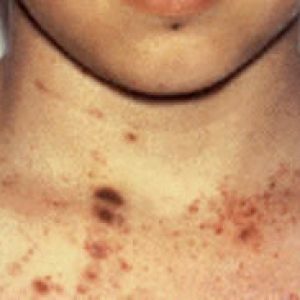Blood test for allergens

Every year the incidence of allergic diseases is increasing.It is believed that an allergy is a scourge of modern society.Having reached a highly economic, technical development society has to pay for it with his health.Forecasts of scientists are disappointing: in the future, only an increase in the prevalence of allergic diseases is expected.But medicine also does not stand still, now modern, comprehensive studies capable of determining the presence of allergy are available to a person.
Table of contents: Diagnosis of allergies Preparation for research Immunological laboratory methods of investigationDiagnosis of allergy
Research of a patient with allergies should be comprehensive. Scheme of allergological examination of a patient consists of several stages:
-
 Study of an allergic medical history;
Study of an allergic medical history; - Physical examination of the patient;
- Diagnosis with the help of skin tests;
- Conducting provocative samples;
- Laboratory research methods;
- Instrumental research methods.
Preparation for the
No special preparation is required before carrying out the study. But nevertheless it is necessary to adhere to following recommendations:
-
 To pass research follows in the morning;
To pass research follows in the morning; - Last meal in approximately ten hours;
- Do not drink alcohol for a day;
- Do not smoke for an hour before manipulation;
- For a couple of days to exclude physical and that is important emotionally.
Immunological laboratory research methods
Recommended to read:Allergy is a hypersensitive reaction of the body that occurs in response to the effects of foreign substances( allergens).The allergen is inherently antigen.In response to the penetration of the stimulus into the human body, predisposed to allergies, the production of specific antibodies( immunoglobulins E) occurs.Detection of these antibodies is possible with the help of immunological studies of blood.The main task of these studies is to determine the causative allergen or allergens.
Immunaboraboratory methods of research have their undeniable advantages:
- The possibility of conducting diagnostic tests for children under two years;
- Ability to conduct research during an exacerbation of allergies;
- Determination of polyvalent sensitization;
- Detection of cross reactivity to allergens;
- Safety for the patient, as the study does not provoke additional sensitization.
- Food allergens;
- Animal allergens;
- Vegetable allergens;
- Household allergens;
- Fungal allergens;
- Professional allergens;
- Medicinal allergens.
- Class 0 - number of antibodies <0.35, allergy not present.
- Class 1 - a very small number of antibodies( 0.35-0.7), possible an asymptomatic allergy.
- Class 2 - the content of antibodies in the blood is 0.7-3.5, this is a small amount of antibodies.There may be symptoms of allergies.
- Class 3 - a pronounced amount of antibodies in the blood( 3.5-17.5).Symptoms of allergies are often present.
- Class 4 - high number of antibodies( 17.5-50.0).There are allergy symptoms.
- Class 5 - the content of antibodies in the blood 50,0-100,0.This is a very high amount of antibodies.
- Class 6 is an extremely high amount of antibodies( & gt; 100.0).

Multiple chemiluminescence method( MAST-CLA)
 Allergotest MACT uses panels with allergens.The allergopanel is filled with the patient's serum.If the patient has an allergy to a particular allergen, specific antibodies are determined in the blood sample.To visualize the antibodies, the lab technician adds a special enzyme.The enzyme, interacting with the antibody, causes luminescence, which can be fixed on special equipment.
Allergotest MACT uses panels with allergens.The allergopanel is filled with the patient's serum.If the patient has an allergy to a particular allergen, specific antibodies are determined in the blood sample.To visualize the antibodies, the lab technician adds a special enzyme.The enzyme, interacting with the antibody, causes luminescence, which can be fixed on special equipment.
A wide range of allergens on these panels allows us to identify not only the latent forms of allergy, but also cross-reactions between different groups of allergens.
Method of radioallergosorbent test( RAST)
Before the test, the laboratory worker takes venous blood from the patient.A probable allergen is placed in the selected blood sample.If the patient has an intolerance to the allergen, then the specific antibodies will attach to the allergen.The lab worker then adds radioactive antibodies against IgE.The resulting radioactive antigen-antibody complex is read on special equipment.
Detection of allergies to certain allergens
As already mentioned for the detection of allergies, it is necessary to examine antibodies in the blood to certain allergens.Often people can not even guess what caused the allergic reaction.
To determine the cause of allergies, you can use allergic panels:
Each panel contains from two to three and up to several dozen allergens.
Explanation of allergy analyzes
Immunological methods of investigation are qualitative and quantitative.The first can only determine the presence of allergies to a certain component.Quantitative methods allow to determine the level of antibodies.
How can I decipher the result of the study?
Grigorova Valeria, medical reviewer



